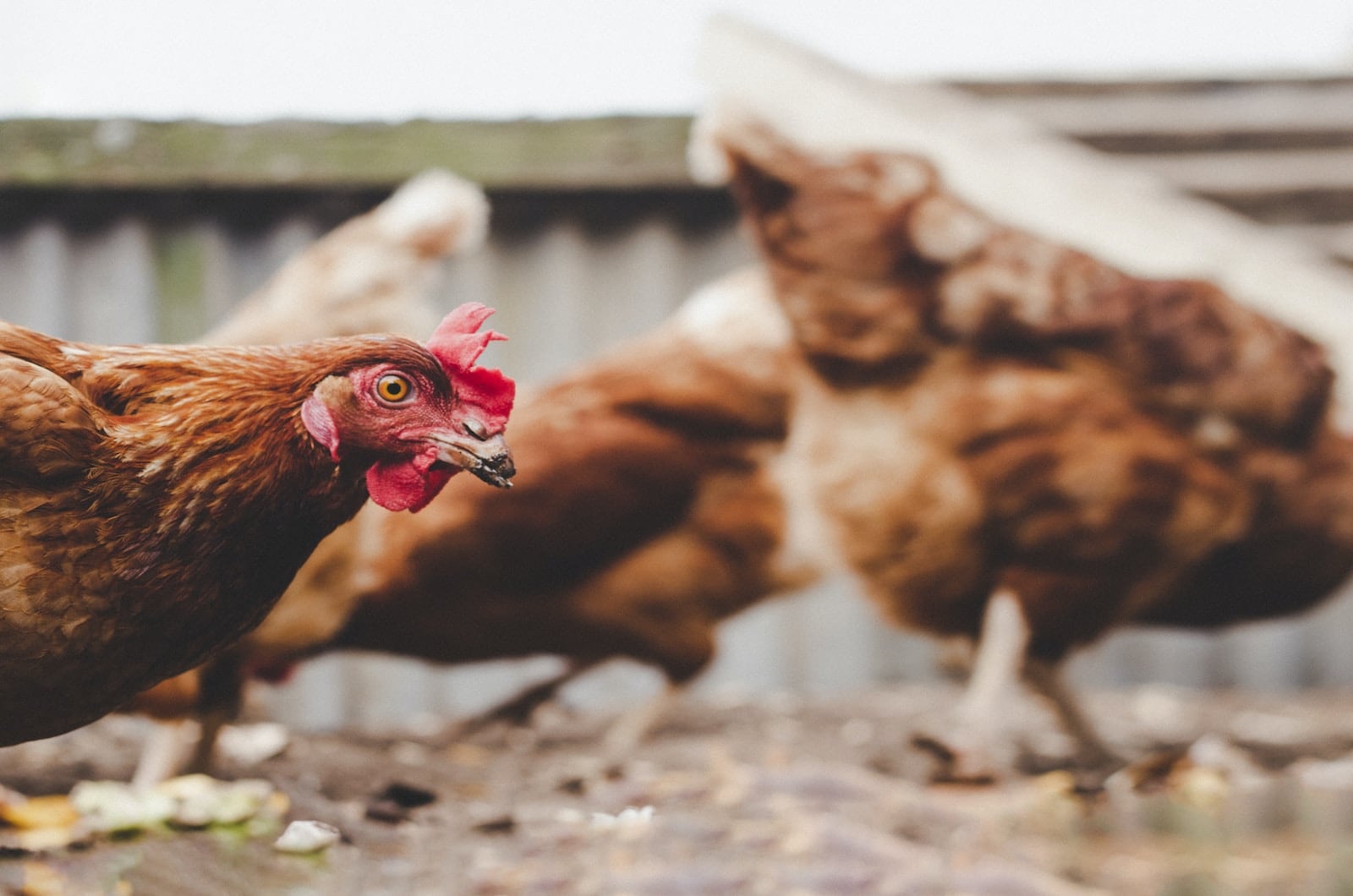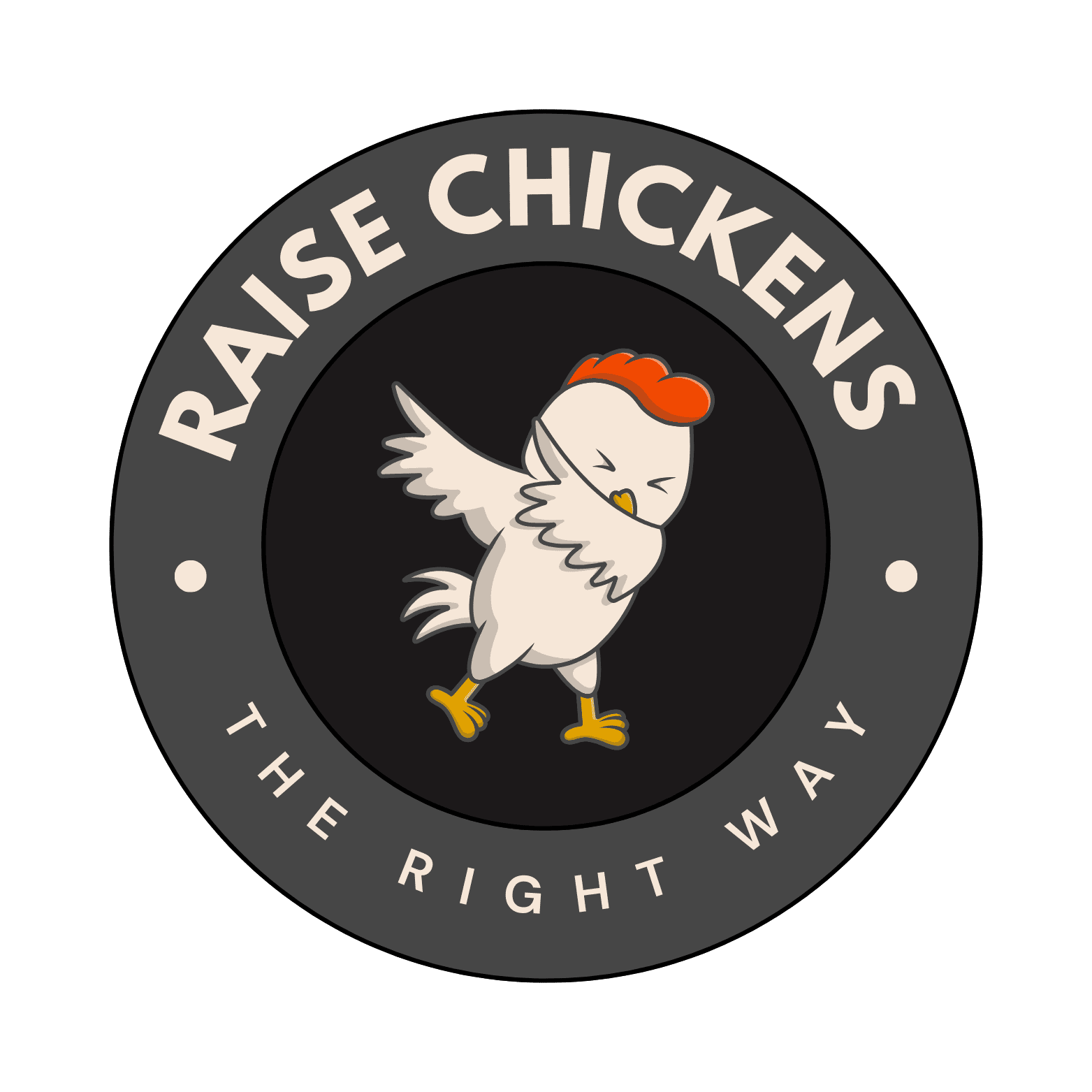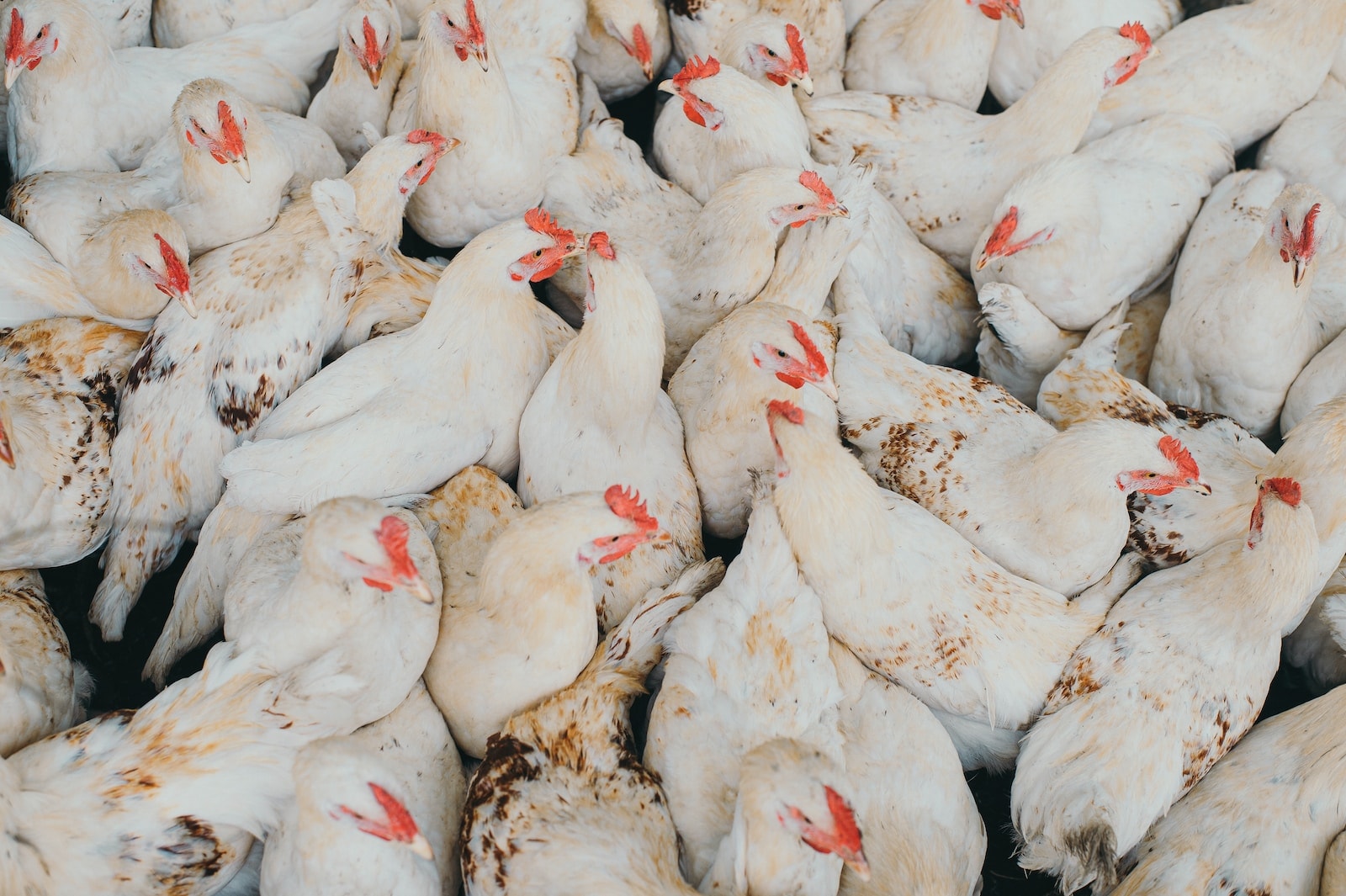In this article, we are going to talk about new and exciting ways of farming chickens. These new ideas are changing the way farmers look after their chickens and help them lay eggs or grow for food.
There are machines and smart tools now that make it easier for farmers to feed their chickens and collect eggs without doing everything by hand.
This is very important because there are more people who want to eat chicken, so farmers need to find faster ways to raise healthy birds. Also, they want to be nice to the environment while they do it.
Scientists use special maps of chicken DNA and even change genes so that chickens can fight diseases better.
Farmers have cool devices today that can tell if a chicken is sick just by listening to its noises or checking how it moves around. They also make sure baby chicks get medicine early on so they start strong and stay healthy.
And when it comes to keeping our planet clean, there’s good news too! Farmers now have special things they add into chicken food that helps take care of waste in smarter ways. Some farms even turn poop into energy!
We’re looking forward too at meats made in labs instead of farms, which could be part of what we eat in the future! Plus, big computer systems help farmers understand lots about their chickens by collecting lots of information.
With all these changes happening in chicken farming, things might look very different soon! Let’s dig deeper into these amazing technologies next!
The Evolution of Poultry Farming
Poultry farming has come a long way from traditional practices to high-tech operations, with advancements in automation, genetics, and precision agriculture driving the industry forward.
From Traditional Practices to High-Tech Operations
Chicken farming has changed a lot over time. In the past, farmers did things by hand and had simple coops for their chickens. Now, they use computers and machines to make work easier and better.
High-tech tools help with feeding chickens, collecting eggs, and keeping birds healthy.
Smart devices connect to the internet to track how chickens grow and eat. This tech makes sure every chicken is happy and strong. Farmers get information fast so they can fix any problems right away.
They also use special software to keep an eye on the health of their flocks. This keeps diseases away from farms and makes sure people get safe food from healthy chickens.
Cutting-Edge Technologies Transforming Poultry Production
Automation and robotics are revolutionizing feeding and egg collection in poultry farming, while precision agriculture is being achieved through remote sensing technology. To learn more about these innovative technologies transforming poultry production, keep reading!
Automation and Robotics for Feeding and Egg Collection
Farms are now using robots to feed chickens and collect eggs. These machines make the work faster and keeps everything clean. They can give each chicken the right amount of food. This helps farmers because they do not waste food.
Robots also find and pick up eggs quickly. They are very gentle, so the eggs do not break. Using these robots means fewer people need to do hard jobs on farms. Farmers can see what is happening with their chickens and eggs any time by using computers or phones connected to these robots.
Precision Agriculture through Remote Sensing
Farmers are using satellites and drones to watch over their chickens. This is called precision agriculture through remote sensing. It helps farmers see how crops grow around their chicken houses.
They can tell if plants are healthy or need water. This way, they use only the right amount of water and food for the plants.
This technology also makes sure the land stays good for farming in the future. Smart tools like these help farmers keep an eye on things without having to walk all over their fields.
Next, we’ll explore how DNA science is changing the way we raise chickens.
Genetic Innovation with DNA Mapping and Gene Editing
In the progression from precision agriculture through remote sensing to genetic innovation with DNA mapping and gene editing, advancements in technology play a vital role in poultry farming.
Genetic innovation focuses on enhancing poultry breeds’ desirable traits, disease resistance, and overall health by using DNA sequencing and gene editing techniques. This brings about significant improvements such as increased immunity against diseases, better feed conversion rates, and enhanced production efficiency.
With DNA tests and predictive analytics, farmers are empowered to make informed breeding decisions to ensure healthier flocks.
Furthermore, genetic innovation enables the development of genetically modified microbes that can improve gut microbiome health in poultry birds. By leveraging this cutting-edge technology along with next-generation DNA sequencing methods, farmers can take proactive measures against parasitic infections and protozoal diseases while also ensuring food safety for consumers.
Enhancing Poultry Health and Welfare
Implementing AI-driven health monitoring systems and in-ovo vaccination techniques are revolutionizing the way poultry farmers care for their birds, while welfare-focused practices are becoming increasingly important.
AI-Driven Health Monitoring Systems
AI-driven health monitoring systems are revolutionizing poultry farming by providing real-time insights into the well-being of the birds. These systems utilize advanced technologies like artificial intelligence and machine learning to detect early signs of diseases, monitor vital signs, and analyze behavior patterns.
By leveraging these innovative systems, poultry farmers can proactively address health issues, minimize the spread of diseases, and ensure the overall welfare of their flocks. Additionally, AI-driven health monitoring enables efficient decision-making based on accurate data, ultimately improving productivity and reducing economic losses in the poultry industry.
Moreover, AI-driven health monitoring systems play a crucial role in preventive measures against avian influenza and other contagious diseases. With real-time data analysis and predictive capabilities, these advanced technologies empower poultry farmers to implement targeted interventions that safeguard the health of their chickens while contributing to sustainable and responsible poultry production practices.
In-Ovo Vaccination Techniques
Modern poultry farming has seen a significant advancement with the introduction of in-ovo vaccination techniques. These innovative methods use automation and precision to administer vaccinations directly into the egg before hatching, ensuring early protection for chicks against common diseases without causing stress.
This approach not only improves the overall health and welfare of the poultry but also contributes to sustainable and efficient poultry production, aligning with industry needs for preventative measures against pathogens such as salmonella.
In-octo vaccination techniques leverage emerging technologies to address challenges faced by poultry farmers, offering a proactive solution that promotes animal welfare while enhancing disease control.
Implementing Welfare-Focused Practices
In-Ovo vaccination techniques are just one aspect of the poultry industry’s commitment to implementing welfare-focused practices. The use of AI-driven health monitoring systems and the integration of genetic innovation with DNA mapping and gene editing also play crucial roles in enhancing poultry health and welfare.
This aligns with the increasing recognition of the importance of technology in improving outcomes for chickens, addressing their needs more effectively.
Implementing welfare-focused practices in poultry farming involves using innovative technologies like AI-driven health monitoring systems and genetic innovation with DNA mapping and gene editing.

Understanding Poultry Behavior: The Science Behind Chicken Vocalizations
Understanding poultry behavior, especially chicken vocalizations, is vital for efficient and effective poultry farming. Through advanced technologies like artificial intelligence (AI) and machine learning, researchers can analyze the meaning behind different chicken vocalizations.
This insight helps in identifying distress signals, indicating when chickens are hungry or thirsty, or even detecting signs of illness. By utilizing wireless sensor networks and AI-driven health monitoring systems, farmers can respond promptly to these cues, ensuring the welfare of the flock.
Moreover, cutting-edge advancements in hyperspectral imaging and surface-enhanced Raman scattering (SERS) are enabling scientists to delve deeper into understanding the underlying biological mechanisms triggering various vocalizations.
These technologies aid in identifying specific diseases based on vocal patterns emitted by infected birds. As a result, early detection of illnesses becomes possible, leading to proactive measures such as targeted treatment or isolation to prevent disease spread throughout the flock.
Sustainability and Waste Management
Novel feed supplements and additives, as well as waste-to-energy conversion systems, are revolutionizing poultry farming’s sustainability and waste management practices. Learn more about how these innovative technologies are shaping the future of chicken farming.
Novel Feed Supplements and Additives
Poultry farmers are increasingly turning to novel feed supplements and additives to enhance the health and productivity of their birds. With the rising demand for healthier poultry products, probiotics and antimicrobials are being integrated into feed formulations to support gut health and prevent diseases in chickens.
These supplements not only help in improving the overall well-being of the birds but also contribute towards producing safer poultry products, addressing concerns related to food safety and antibiotic resistance.
Moreover, advancements in nano and genetic technologies have led to the development of specialized feed additives tailored to promote growth, improve nutrient absorption, and strengthen immunity in poultry.
Incorporating these cutting-edge additives into chicken feed demonstrates a shift towards sustainable poultry production while meeting consumer expectations for high-quality, ethically produced poultry products.
Waste-to-Energy Conversion Systems
Poultry farming is exploring waste-to-energy conversion systems to manage organic waste and lower environmental impact. These systems use advanced technologies to convert poultry waste into valuable energy, reducing reliance on traditional fossil fuels.
With the rise in sustainability concerns, these innovative solutions align with the industry’s push towards Net Zero while addressing challenges related to waste management and renewable energy sources.
In 2023, waste-to-energy conversion systems are gaining traction within the poultry industry due to their potential for sustainable energy production and efficient waste management.
The Future of Poultry Farming
Clean Meat and Cellular Agriculture are shaping the future of poultry farming, while big data and analytics continue to play a significant role in driving innovation. Read on to discover the exciting advancements in technology that are revolutionizing the poultry industry!
Clean Meat and Cellular Agriculture
Clean meat and cellular agriculture represent the future of poultry farming, offering sustainable solutions to meet the increasing demand for poultry products. With advancements in biotechnology and cellular agriculture, companies like Memphis Meats are pioneering the production of real meat from animal cells, reducing environmental impact and addressing food safety concerns.
By utilizing next-generation DNA sequencing and innovative incubation techniques, these technologies aim to revolutionize meat production by providing healthier, safer alternatives while minimizing the ecological footprint associated with traditional livestock farming.
As global concerns about sustainability continue to grow, clean meat and cellular agriculture hold immense potential in reshaping the future of poultry production.
In 2023, emerging technologies such as clean meat and cellular agriculture are poised to transform the poultry industry by offering efficient methods that align with modern sustainability goals.
The Role of Big Data and Analytics
Big data and analytics play a crucial role in poultry farming, providing valuable insights into various aspects of production. These technologies enable farmers to analyze vast amounts of data, such as feed consumption, health records, and environmental conditions.
With this information, they can make informed decisions to optimize processes and improve overall productivity. Big data and analytics also help identify trends and patterns that can lead to better disease control, nutrition management, and resource allocation within the poultry farm.
Furthermore, by harnessing the power of big data and analytics, poultry farmers can enhance traceability, transparency, and sustainability across the entire supply chain. This allows for more efficient tracking of product quality from farm to fork while meeting evolving consumer demands for safe and ethically produced poultry products.
Conclusion
Innovative chicken farming technologies offer practical and efficient solutions to modern poultry challenges. Embracing these advancements can lead to significant improvements in efficiency, production, and animal welfare.
How can you apply these cutting-edge strategies in your own poultry operations? Consider exploring further resources or guidance to delve deeper into this transformative area of agriculture.
Remember that the future of poultry farming lies in harnessing the power of technology for sustainable and successful outcomes.
To dive deeper into the behavioral cues of our feathered friends, explore the science behind chicken vocalizations and what they mean for their welfare and productivity.

